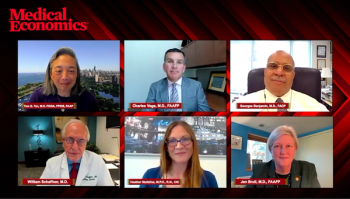
Letter to the editor: Narrow networks carry risks
A reader writes that narrow networks may contain costs, but they don't provide value.
The article on narrow networks (
Empirically and experientially, reduced accessibility through narrow networks in socialized systems leads to shortages and waiting lines. This leads to de facto cost-containment, but not value, since patients waiting in line cost the system nothing because they receive nothing in service. A politician can then proclaim, “You’ll have the right to (wait in line for) healthcare, if you vote or me!”
Nurse practitioners and physician assistants will deliver future primary care, which may be OK, but it’s a long leap from, “You get to keep your own doctor, period.”
Stewart Andrews, MD
Bellingham, Washington
Newsletter
Stay informed and empowered with Medical Economics enewsletter, delivering expert insights, financial strategies, practice management tips and technology trends — tailored for today’s physicians.








